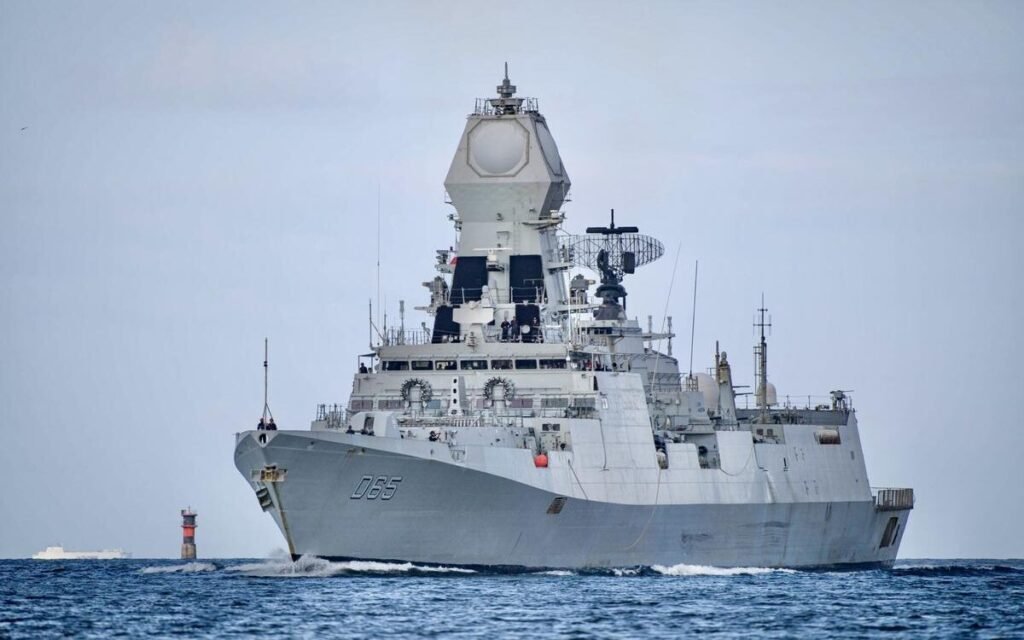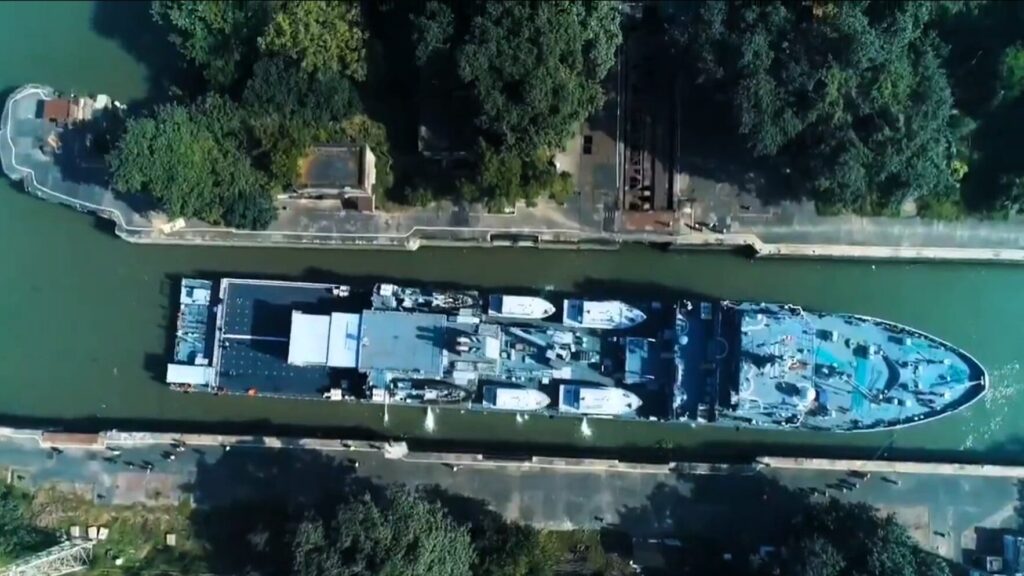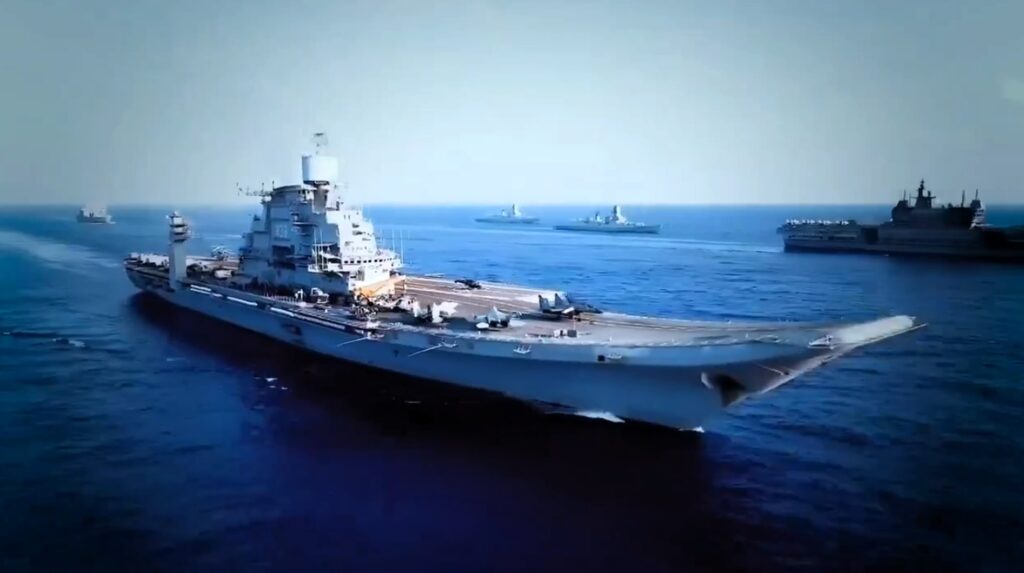New Delhi: India is ensuring that no overwhelming economic and military power can exercise “hegemony” over other nations in the Indian Ocean region or threaten their sovereignty, Defence Minister Rajnath Singh said on Tuesday, in a veiled reference to challenges posed by China’s increasing military muscle-flexing.
In an address at an event in Goa, Singh also said India’s growing maritime power is not for dominance, but to create an environment of peace and prosperity in the Indo-Pacific.
“We ensured that the rules-based maritime order is strengthened in the Indian Ocean region. India is ensuring that all the neighbouring countries of the Indian Ocean should be helped in protecting their autonomy and sovereignty,” he said.
“We have ensured that no one exercises hegemony in the region,” Singh said after inaugurating a new training facility at the Naval War College in Goa and virtually dedicating several infrastructure projects at the Indian Navy’s strategic base in Karwar.

He described recent attacks on undersea cables as a direct strike on strategic interests, and urged the Navy to remain prepared to deal with such challenges.
The projects inaugurated at Karwar base under phase IIA expansion included two major piers including one aircraft carrier pier, capable of simultaneous berthing of two aircraft carriers and one landing ship tank (Large).
The phase IIA was approved for developing infrastructure for berthing of 32 ships and submarines, 23 yardcraft, besides building a dual-use naval air station, a complete naval dockyard and four covered dry berths. The Navy is expanding the crucial base as part of project ‘Seabird’.
Lauding the Navy for its anti-piracy and anti-trafficking operations, Singh said though the force’s promptness resulted in reduction in the number of such incidents, the threats cannot be ignored.

“The increasing naval power not only protects us from our adversaries, but also provides an environment of security to other stakeholders in the Indian Ocean,” he said.
The defence minister highlighted that due to the Indian Navy’s readiness, India is fulfilling its responsibility in the Indian Ocean Region by providing full assistance to the littoral countries.
The Indian Navy is ensuring that no country, with its overwhelming economic and military power, is able to assert dominance over friendly countries or threaten their sovereignty, he said.
In his remarks, Singh also spoke about the shift in dealing with the threat perception under the leadership of Prime Minister Narendra Modi.

“Earlier, almost all the governments focused on strengthening land borders, but maritime threats were not given as much importance,” he said.
“In view of the increased movement of our adversaries in the Indian Ocean Region and the commercial importance of the region, it was necessary to re-assess our threat perception and accordingly re-balance our military resources and strategic attention,” Singh said.
“Under the prime minister’s guidance, we not only re-imagined India’s role in the Indian Ocean Region (IOR), but also strengthened it. Due to these efforts, India has today emerged as the first responder and preferred security partner in the IOR,” he said.
He said if the country focuses only on land areas and their security, it will be like ignoring the security of more than 20 lakh square km of exclusive economic zone.
The defence minister reiterated India’s commitment to work towards strengthening the economic and security co-operation with its maritime neighbours, in line with the Security And Growth for All in the Region (SAGAR) vision of Modi.

Underscoring the transformative strategic thinking of ‘New India’, he asserted that “we were once known as a ‘landlocked country ‘with sea shores’, but now we can be seen as an ‘island country with land borders’”.
On the Indo-Pacific, Singh said resources and opportunities available in the region will be the factors of India’s prosperity, adding it makes the Indian Navy’s role even more important in the future.
Talking about the Project Seabird, he said it has brought the largest naval infrastructure building in the country and expressed confidence that both the piers will further strengthen the strategic presence of the Navy on the western coast.
The new training facility at the Naval War College has been named the ‘Chola’.

The defence minister, referring to the name of the facility, said it pays homage to the mighty maritime empire of the Chola dynasty of ancient India.
He described Chola Bhawan as a symbol of the aspirations of the Navy and India’s legacy of maritime excellence.
It is also a reflection of India’s new mindset of coming out of the mentality of slavery and feeling proud of our rich historical heritage.
Chief of the Naval Staff Admiral R Hari Kumar drew the attention of the audience to the evolving security challenges, particularly in the maritime domain.

He highlighted the indispensable role of higher military education in countering these challenges.
Admiral Kumar expressed confidence that the new training facility will serve as an icon of the country’s resurgence as a maritime power by serving as a ‘Gurukul’ for learning and sharing maritime perspectives, not only for the officers of Indian forces but also for maritime neighbours.
PTI
